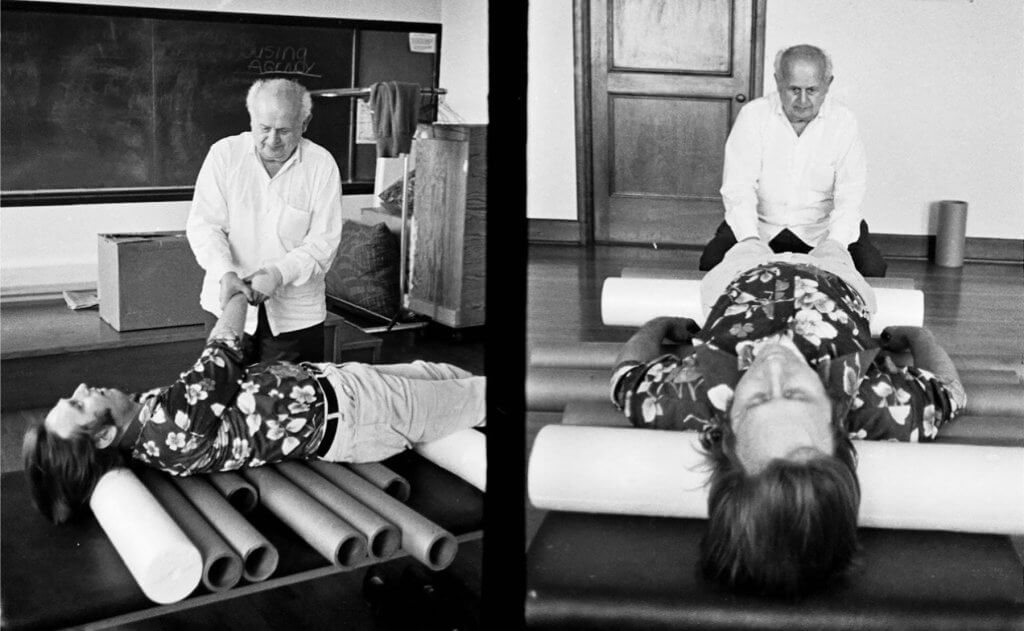
This post was adapted with permission from Larry’s Goldfarb’s blog.
Applying the Feldenkrais® Method to Foam Rollers
In the past few years, foam rollers have become a known entity. These dense, resilient cylinders can be found in gyms, yoga and dance studios, dojos, and many folk’s homes. There’s a vast world of resources such as articles and videos on the benefits of foam rollers, and how to use them. These are incredibly versatile tools, with uses that go far beyond self-massage!
This July, Dr. Larry Goldfarb will return to Castle Hill Fitness to teach a weekend workshop on applying the Feldenkrais® Method toward foam rolling. You’ll discover how being on a surface that moves while you move allows you to access your brain’s built-in ability to learn. You will learn to change stubborn holding patterns, rebalance the entire neuromuscular system, and upgrade your equilibrium, posture, breathing, and coordination. In other words, you will find out how to use your roller to improve how you move. The emphasis will be on practical techniques and insights you can take with you.
Whence Rollers
Unlike Styrofoam, which is made of polystyrene and breaks instead of bending, Ethafoam is an elastic polyethylene. It compresses to support a heavy load and then returns to its original shape and size after you remove the forces that caused it to deform.
This physical resilience makes Ethafoam the ideal material for foam rollers. Before they became popular exercise and self-care equipment, before the physical therapist and Feldenkrais teacher Sean Gallagher introduced them to Broadway dancers, Moshe Feldenkrais originated using these rollers in a somatic practice.
Larry Goldfarb became introduced to foam rollers at his Feldenkrais teacher training in 1980. In doing research for his new Foam Roller Revolution workshop, he tumbled down a polyethylene rabbit hole. Larry found out that it also comes in sheets and other shapes. He learned that polyethylene was the unexpected and fortunate result of a mishap in a UK lab in 1933.
During the second world war, the British military revolutionized airborne warfare by using PE as electrical insulation, making it possible to manufacture small, light, and effective equipment to put in fighter planes. Moshe Feldenkrais, the founder of the Feldenkrais Method, was doing sonar and radar research for the British Navy in Scotland simultaneously, so he could possibly have run across this synthetic material back then.
Whether or not that happened, Feldenkrais used other cylinders long before the advent of foam rollers, such as custom-made wood rollers. He even used the sturdy cardboard tubes found at the center of giant rolls of newsprint, which he obtained directly from the Davar newspaper. In Larry’s research, Feldenkrais didn’t use foam rollers before starting his San Francisco teacher training in 1975. Photos (such as this blog’s cover photo) have shown him working with foam and cardboard rollers. It is possible that Ruthy Alon, a graduate of his first teacher training, may have introduced him to these phenomenal foam cylinders at this time.
A FELDENKRAIS APPROACH TO FOAM ROLLING
